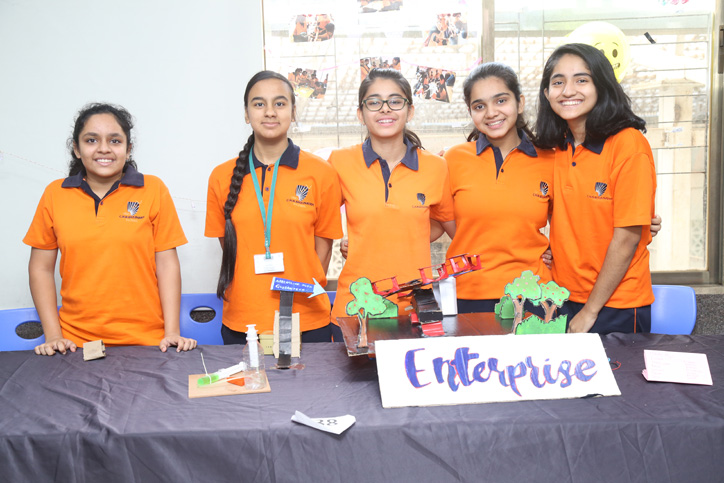13 JUNE 2019
Cambridge IGCSE science project work tips for teachers

Kavita Sanghvi, a Cambridge IGCSE™ Physics teacher and Head of a school in Mumbai, India offers her advice and ideas for teachers wanting to carry out project work. Kavita is a member of The Cambridge Panel, our online teacher community.
The Plan-Do-Study-Act (PDSA) cycle for project work
Projects provide students with opportunities to build their skills through collaborative research, hypothesis creation, prototype design and testing, as well as evidence analysis.
The benefit of project work is widely accepted, but the driving question on everyone’s mind is how to integrate it within your school calendar when the curriculum is vast, teaching hours are fixed and varieties of events are sprinkled throughout the year?
The PDSA cycle, created by W. Edwards Deming, has helped me continuously improve my curriculum execution
1. PLAN – We do the academic planning for next year five to six months in advance. Our school begins the academic year in June and by January/February we have created our yearly planner so that assessment schedules, holidays and important events are recorded.
We select textbooks and create subject year plans for every grade simultaneously so we know the topics we can focus on for our project work. This project work is also part of our formative assessments and so it’s given due importance.
A few teachers are selected as ‘in-charges’. Along with the rest of the teachers, they plan the theme for the entire school by looking at the array of topics. After a series of meetings, we finalise the project week outline.
E.g. Our project theme in November 2019 is ‘redesigning towns and cities for environmental sustainability’. We split up the theme as per difficulty level and then finalise the class topic planning. Grade 3 presents the features of a sustainable city, Grade 6 designs a sustainable city and Grade 10 redesigns an existing city to make it sustainable.
2. DO – During the academic year, the subject teachers continue with their teaching and learning practices. Two months in advance of the project week, they share the theme with the students. They inform the students of the learning objectives, the project design and the rubrics for evaluation, and then divide the class into groups.
Students research the theme and discuss with their teachers the prototypes and models. After many rounds of discussions, groups finalise a project design and the execution begins. Every week, students share updates on the project with the teacher.
One month before the project week, the Head and ‘in-charge’ create a duty list for teachers and the student council so that each is aware of their roles and responsibilities. This is apart from the regular guidance offered to the students.
A fortnight before the project week, students showcase the projects. Those who are presenting in front of the whole school practice with the ‘in-charges’ so they can offer constructive feedback. Students and teachers rework the projects to meet the learning objectives and make it more meaningful.
Finally, during project week the students present their projects with confidence to the judges, parents and peers. This is a testing time for all of us because everyone involved records their feedback.

Kavita (far right) at STEMAGIC festival
3. STUDY – We document and review the entire project week and analyse the feedback from the judges, parents and students to note down the strengths and shortcomings. We then hold a meeting with the entire staff to understand their experience and offer inputs for next year.
E.g. This year we opened it for only three hours for parents and there was a huge rush. They did not have time to appreciate the students’ work. Next year, we will allocate time slots and more time in them. On individual class levels, the teacher will sit with the students and share the project evaluation report. She will highlight the key achievements and guide them on further improvements.
4. ACT – The new planning begins, taking in all the reflections. Strategies that have worked are retained, methods and practices that lacked perfection are corrected and altogether a new theme is undertaken so that repetition is avoided and new learning is reinforced. This year the theme was Technology in STEM – we called it ‘STEMAGIC’.
Schools are dynamic places and undergo constant changes. Planning done today could be completely revamped due to unforeseen circumstances, but if the desire to see students learn different skills is strong, then projects can be a reality for every school.
Thank you for your feedback which will help us improve our service.
If you requested a response, we will make sure to get back to you shortly.
×